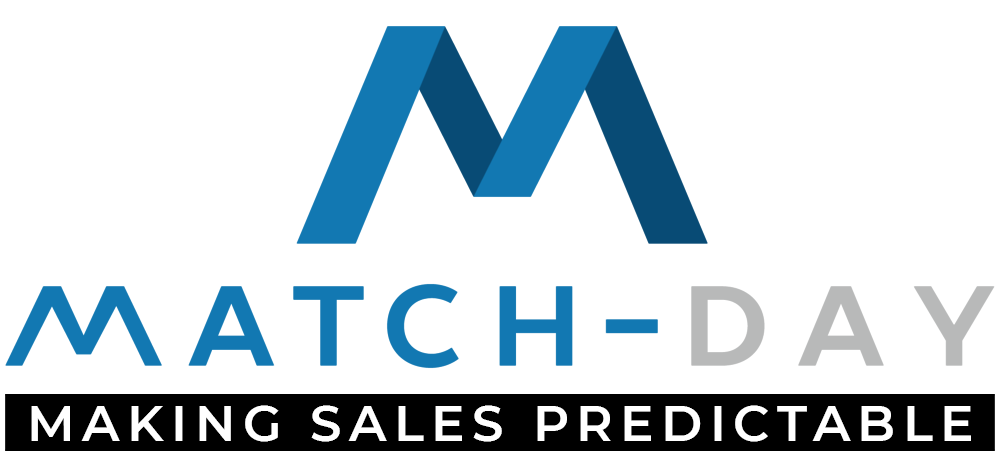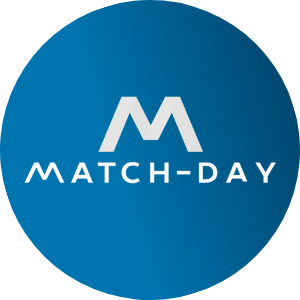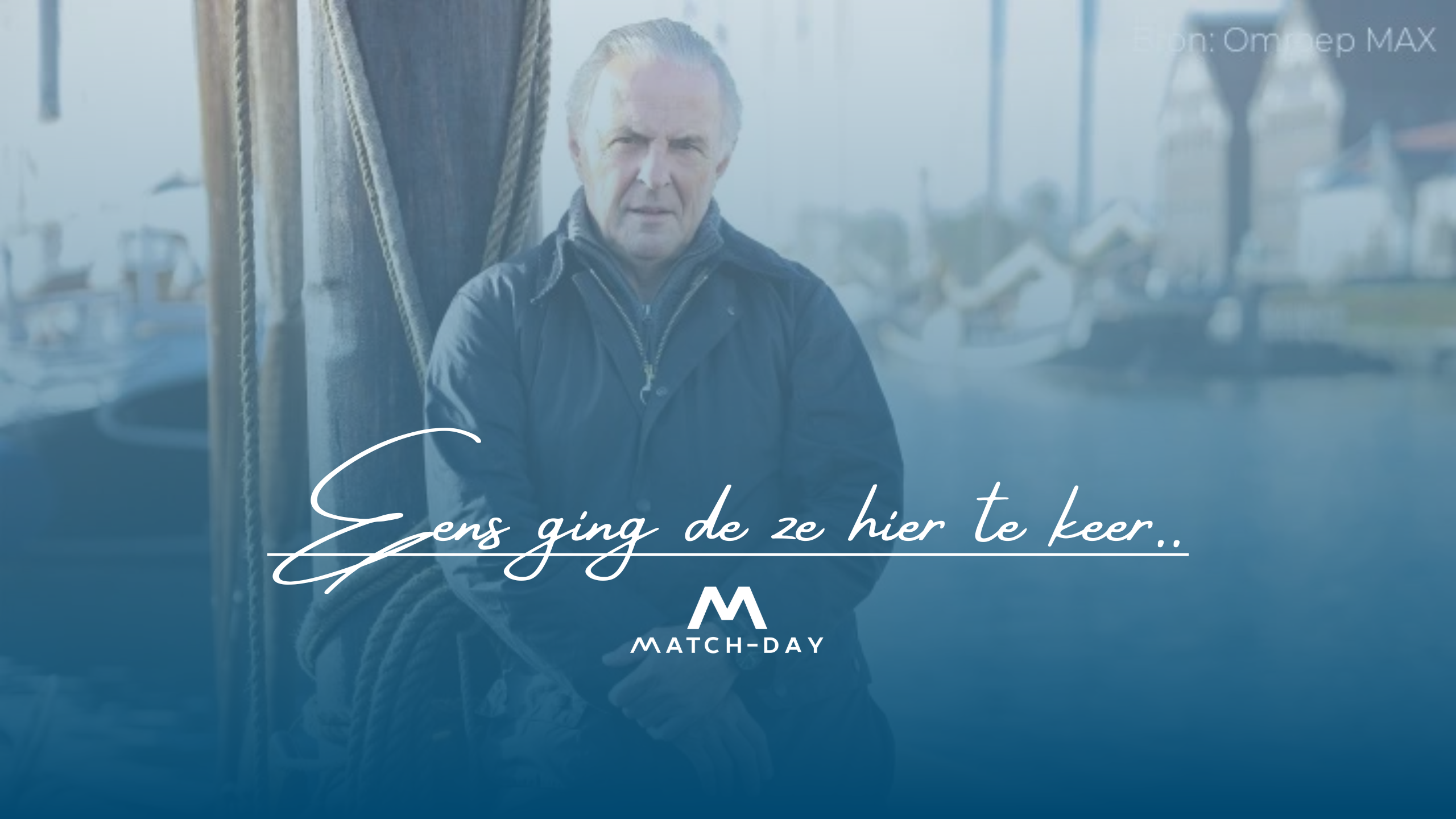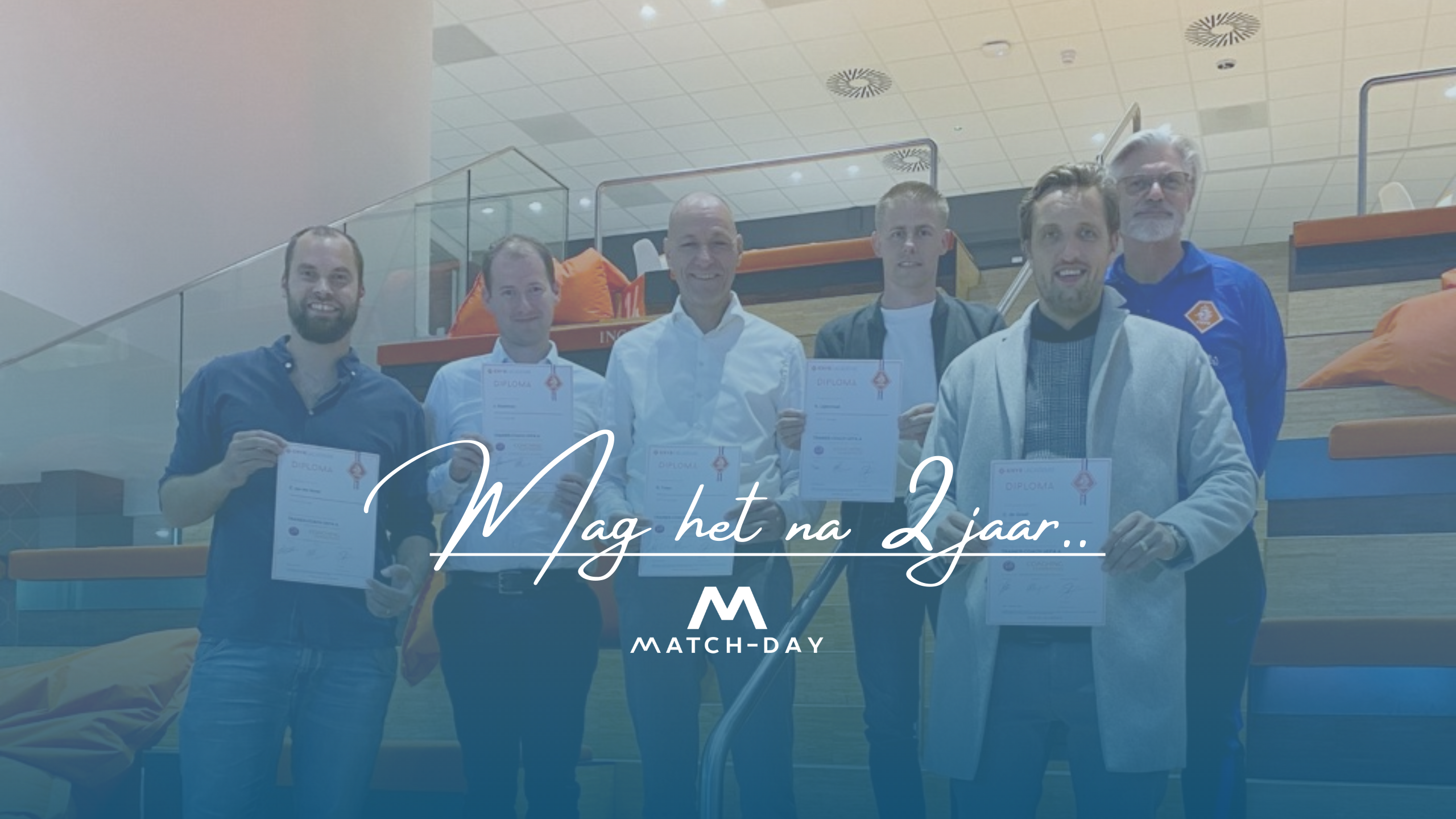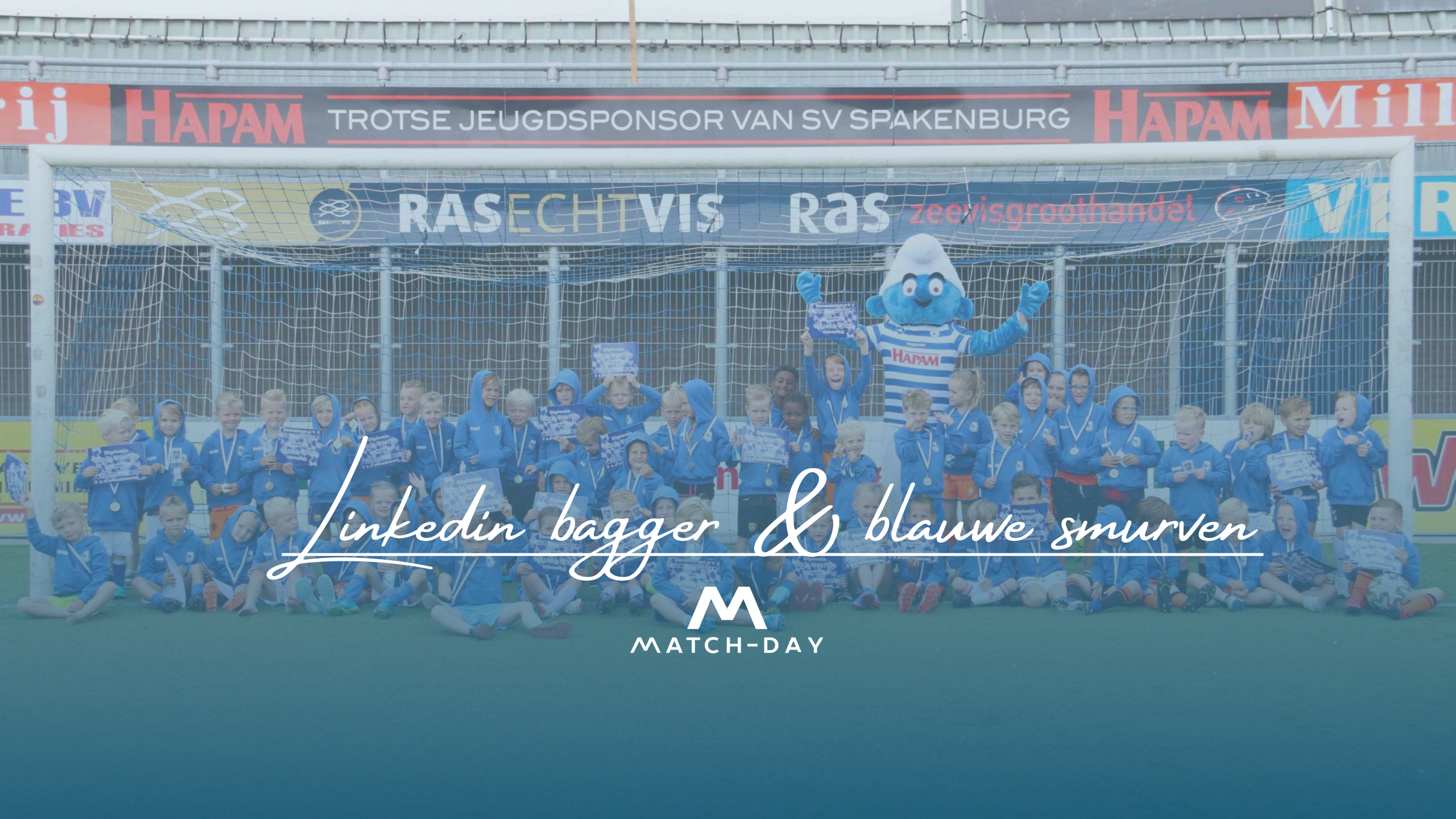Although many so-called gurus claim otherwise, the vast majority of companies do not have enough inbound leads or references to structurally grow or meet their targets.
But how do you proactively find new market?
To find or to be found?
Peter Verlegh, professor of marketing at the VU, once described the essence of marketing and sales as 'finding the market and creating demand'. Finding a new market is knowing which prospects are in the market and what they are up against, so that you know what excites them.
There are two ways to do this. The first is to wait for prospects to respond to your marketing message or to report back after a reference. These prospects are in the market, in buying mode as we call it. Only by them reporting themselves do you know they are in the market. The disadvantage of this method is that it is very difficult to scale and therefore difficult to grow structurally in this way.
The other way is through outbound prospecting. By proactively engaging - and staying engaged - with prospects even if they are not yet in buying mode, but do meet your ideal customer profile. You will have to create demand with them.
Creating demand or need requires a change in behaviour. You want prospects to change their current way of working. If you do not force people by fear or violence, they usually only change their behaviour if they want to because they have a certain need.
The big question is, can you create a need? And why do you want to engage with prospects who meet your ideal customer profile, but are not yet in buying mode?
For many companies, the main reason is that they don't want to wait for prospects to come forward and influence their growth.
Personalise your message
You can certainly create a need. Many of your prospects are working in the best way they know how. They are completely unaware that they are missing an opportunity to function better or to make their lives easier. And if a prospect doesn't know they can do better, they won't feel the need to change, simple as that!
In order to get them to realise this, you will have to get into a conversation with them. And that's where most organisations go terribly wrong! The most common mistake during outbound prospecting is that all prospects are approached with a sales message.
The vast majority of your prospects are not there at all. For them, you are not relevant and that is why they do not want to talk to you. Of course, it is much easier to blame all sorts of external factors. But I dare say that in most cases it is due to the irrelevant message. The message does not match the prospect's needs.
Sales guru and researcher Chet Holmes explains in his bestseller "The Ultimate Sales Machine" which phases of need we distinguish within a total market. We call this "the Pain Triangle". This indicates where your prospect is in the buying process. This research is a crucial starting point for your new business strategy. Because it shows why it is crucial to personalise your message to the needs of your prospect.
By the way, this is cross-industry, so it applies just as much to companies that sell a software solution as it does to machine builders. I would be happy to tell you how these phases are structured and how your organisation can benefit from them.
Needs determine the message
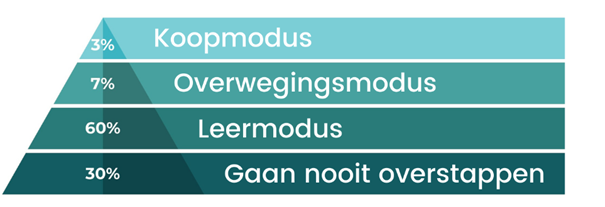
PHASE A: 3% of your target group is in buying mode.
That is, these prospects are consciously considering changing their situation within the next three months. A practical example is if your lease expires in three months' time and you have to leave your premises. Then you need a solution now.
You can imagine that you don't encounter many prospects in this 3% during outbound prospecting. Because once you reach this stage, a large part of them will contact you themselves or they are already looking for a competitor. If you do come across them, this is of course a bonus.
PHASE B: 7% of your target group is in Consideration Mode
These prospects are aware that they can do their job better or make their life easier. But they are not actively looking yet, on average they make a purchase within 3-6 months. They are open to your solution or are in the research phase but the problem is not big enough NOW to make a switch.
In other words, these prospects need a push. You talk to them about online meetings and demos.
PHASE C: 60% of your target group is in Learning Mode
Most of your prospects are not aware that they have a problem or are missing an opportunity to function better. They are functioning in the best way they know how. On average, they will make a purchase within 6-18 months, so they are not in the process of switching or changing right now.
However, they are open to improving their performance or learning more about their passion. We will discuss this in more detail in the next paragraph.
PHASE D: 30% of your target group is not interested.
They have just concluded a new contract, bought a new CRM system or a new machine and are delighted with their solution. They do not want contact or an appointment with us and we do not want contact with them.
Learning mode
As you can see, on average 70% of your target group makes sense to engage in conversation. That 70% can be roughly divided into two flavours:
1. 10% of your prospects have a conscious pain or ambition -> Buy mode, Consideration mode
2. 60% of your prospects are open to learning -> Learning mode
What does learning mode mean?
It is an integral part of the human brain that we want to become better at what we do because otherwise we will be passed over. In nature they call this evolution.
These prospects are at the beginning of the funnel. Although they have no need for a new solution at the moment, they are open to learning more about their field or passion.
So your message to them should not be sales-oriented, but try to make these prospects curious.
This can be done by giving them insights they don't already have. Offering them information that makes them smarter about their job or performance. Or by giving them a glimpse of the future by showing them where their market or field is heading.
You can think of educational events or a 1 on 1 webinar. As long as the approach is to bring (knowledge) rather than to get it! This way of doing New Business has yet to be fully adopted in the Netherlands. The competition with prospects early in the funnel is therefore minimal. We often see that when we have built up trust and expertise with a prospect step by step, they do not even invite competitors.
Want to know more about this way of New Business Development?
Wednesday 28 April at 10.30 am I will give a free power session about:
5 unknown principles that have a huge impact on your conversion of your online meetings and demos
Register at: https://match-day.nl/webinar-2/
